Key Takeaways
- Synthetic nicotine, also known as tobacco-free nicotine or non-tobacco nicotine, is almost identical to natural nicotine but is created in a lab using a chemical process rather than being extracted from tobacco plants.
- Synthetic nicotine is more expensive to produce than plant-derived nicotine, so while increased interest in the product has brought the price down, the majority of nicotine used in vape liquid uses the natural variety.
- Some vape brands began to use synthetic nicotine to circumvent the 2016 reclassification of vape products as tobacco products. In 2022, the FDA amended the Tobacco Control Act to include nicotine from ANY source.
- Research into the effects of synthetic nicotine has been minimal. But assuming the nicotine has been produced safely, there is no reason to think that it is any more or less dangerous than natural nicotine.
Although nowhere near as common as traditionally extracted nicotine, many people who have been vaping for a while will have heard about synthetic nicotine products. You might have heard of it under a different name, such as TFN, but it’s almost always the same thing.
The term synthetic can instantly conjure up images of fake or lower-quality products. Take synthetic and naturally-formed diamonds for example. But is that assumption right when talking about nicotine?
What is synthetic nicotine, is it being used in vape juice, and is it better (or worse) than nicotine extracted from a natural plant? Here’s everything you need to know.
What is Synthetic Nicotine?
Synthetic nicotine, also known as Tobacco-free Nicotine, is almost identical to natural nicotine but is created in a laboratory using a chemical process rather than being extracted from tobacco plants. That means, unlike naturally-sourced nicotine, it doesn’t contain any traces of other organic compounds found in the plant. In all other ways, synthetic nicotine is regarded by science as being chemically the same as plant-derived nicotine.
The process used to create synthetic nicotine has been understood for a long time. It was first synthesized over 100 years ago and has been used in tobacco-free products for several decades. Nicotine gum, patches, and other NRT and smoking cessation products can all potentially contain lab-produced synthetic nicotine.
The exact process to synthesize nicotine varies between producers. The most common method involves ethyl nicotinate, which is a compound derived from niacin (more commonly called Vitamin B3) combined with an acidic element. This compound goes through several processing stages, becoming Myosmine and then Nornicotine, before finally becoming synthetic nicotine.
As you might expect, it’s a complex process. The end result, however, has a molecular structure functionally identical to traditionally extracted nicotine, but without a tobacco plant being involved at any stage.
Synthetic Nicotine in Vapes
Even though the vaping industry has been constantly changing and evolving over the last 15+ years, the majority of vape liquid available today still contains plant-derived nicotine. So why, if it can be made without having to harvest millions of plants, isn’t it used more often? The answer is almost certainly based on a single factor: cost.
Due to the more involved manufacturing process and smaller production capacity, synthetic nicotine is several times more expensive to make than plant-derived nicotine. That means that, up until recently, there has been no financial incentive for e-liquid producers to switch from using tobacco-derived nicotine.
However, as interest in this alternative nicotine production method has increased, production prices have begun to come down. Nearly 9000 successful applications were made to the FDA for approval to market synthetic nicotine products in 2022, mostly from the e-cigarette and vape industry. It should be noted that nearly a million similar applications were rejected in the same year.
Exactly how many of those products have hit the market is hard to gauge, and it is still quite hard to find vape liquids that are clearly labeled as using tobacco-free nicotine. But although seeing synthetic nicotine used in your vape juice is more likely than ever, it is still a fraction of the thousands of e-liquids available.
The nicotine we find in our vapes may be beginning to change, but it is unlikely that we will see synthetic nicotine become the standard in e-liquids until it is as cheap and easy to produce as nicotine from tobacco plants.
Was Synthetic Nicotine Banned?
Synthetic nicotine has never been banned, but a loophole concerning its use in vapes was closed. In 2022, FDA regulations were amended to include nicotine derived from ANY source. This means that products containing synthetic nicotine are regulated the same way as all other tobacco and vape products.
To understand why the change was needed, we have to look at how the regulation of vaping products changed in 2016. Following the enactment of the Tobacco Control Act’s Deeming Rule, which reclassified vape products as tobacco products, some vape product manufacturers took advantage of the original regulatory wording that specified “nicotine made or derived from tobacco.”
Products containing synthetic nicotine began to appear to get around that regulation, including some from the well-known Puff Bar brand. Sold as containing “tobacco-free nicotine,” these products were, for a time, not controlled in the same way as most vape products.
How to Tell if Vape Juice Contains Synthetic Nicotine
All vape liquids and products containing e-liquids (like disposables) must follow specific legal guidelines to be offered for sale. One of these guidelines is displaying a complete and accurate list of ingredients on the packaging or label. If synthetic nicotine has been used in a vape liquid, it cannot be listed as just “nicotine”.
Instead, it can be listed in the ingredients as TFN, TF Nicotine, NTN, or simply as synthetic nicotine. TFN stands for Tobacco Free Nicotine, and NTN is Non-Tobacco Nicotine, both of which are now recognized terms within the tobacco and vape industries (and the lobbying bodies that oppose them.)
Black-market vape juice, which is unlikely to abide by U.S. regulations, may incorrectly label plant-derived nicotine as synthetic or TF nicotine. And although, if that were the case, it would have little effect on your health, it’s yet another reason to make sure you buy your ejuice from reputable retailers.
Is Synthetic Nicotine Safe?
It can be easy to assume that something derived from plants will automatically be safer than something made in a lab. But as far as nicotine is concerned, the opposite is almost certainly true. Technically, lab-created nicotine is the purest form available to use.
As we have already discovered, synthetic nicotine is still nicotine. It has the same chemical properties, is equally as addictive, and can do the same harm (particularly to young and unborn children) if abused. However, it has been argued that because it doesn’t contain the traces of organic material that plant-derived nicotine contains, it could be less damaging to health (it isn’t just smoke from tobacco that contains harmful chemicals.)
So far, research into the effects of this alternative nicotine has been minimal; there was little need to look into its effect when its use was far less common. Until contradictory evidence is found, and assuming the nicotine has been produced safely, there is no reason to think that synthetic nicotine is any more or less dangerous than nicotine extracted from tobacco.
Is Synthetic Nicotine More Addictive than Nicotine?
Both synthetic and “natural” nicotine are thought to interact with the brain in the same way. There is no available evidence to suggest that synthetic nicotine is more or less addictive than plant-derived nicotine. Nicotine in any form, although considered relatively safe as a chemical, can be highly addictive.
Nicotine is addictive because it changes the chemistry of our brains. It releases dopamine in the same way, and in the same areas of the brain, as other addictive drugs. Although the quantity of released dopamine is less than with drugs like opium, the brain still craves that chemical release. So far, nothing we know suggests that synthetic nicotine releases more or less dopamine than ordinary nicotine.
One of the reasons vaping is considered better for you than smoking, and even as a recognized smoking-cessation tool in some countries, is because it allows you to control your nicotine intake more accurately. It is far easier to reduce your nicotine intake through vaping than by trying to smoke weaker or fewer cigarettes.
Do Synthetic Nicotine Vapes Taste Different?
Pure nicotine is flavorless and odorless but develops a slightly bitter, acidic flavor when exposed to air and light. It is an unpleasant taste at best and disgusting at worst. That’s why we rarely see flavorless vape liquids other than a base liquid to which flavor is added later.
Plant-derived nicotine is less pure than synthetic nicotine, so the bitter flavor might be more pronounced. You would almost certainly taste the difference if no other flavor was added. But it is doubtful that you would be able to notice a difference between a flavored liquid that uses synthetic nicotine and one that uses “natural” nicotine unless that added flavor was very subtle.
Synthetic Nicotine FAQ
Is there synthetic nicotine in Elf Bars?
Some, but not all, Elfbar vapes use synthetic nicotine instead of tobacco-derived nicotine. The BB3500 disposables that we reviewed are one example of an Elfbar that does, but it is clearly stated in the ingredients list.
Are nicotine salts made from synthetic nicotine?
Nicotine salts can be produced using synthetic nicotine, but are much more commonly made by processing plant-derived nicotine with benzoic acid. Tobacco-derived nicotine is the most cost-effective way to make nic salts, and this is unlikely to change any time soon.
Does synthetic nicotine feel different?
Some users have reported that synthetic nicotine produces a kind of “buzz” that isn’t felt with tobacco-derived nicotine, but these reports are anecdotal. There has been little research, and no evidence found, to suggest that synthetic nicotine gives a more intense experience.
Is TFN the same as 0% nicotine?
No, they are not the same. TFN (tobacco-free nicotine) is, as we have explored above, nicotine created without using tobacco plants. A 0% vape liquid should contain no nicotine, synthetic or otherwise.
Where else is natural nicotine found?
Nicotine occurs naturally in many plants, including potatoes, tomatoes, celery, and cauliflower. The difference is the amounts that they contain. Nicotine makes up as much as 5% of the dry weight of tobacco leaves, but less than 100 nanograms per gram of a potato.

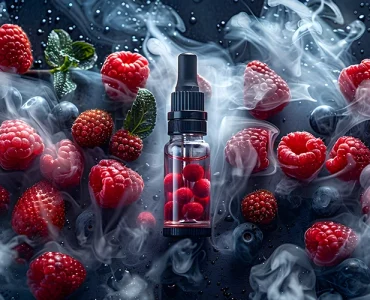


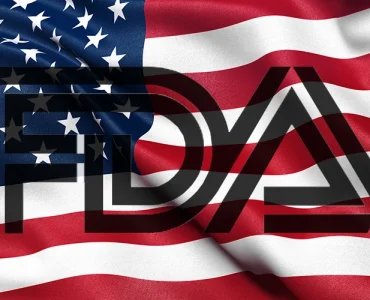
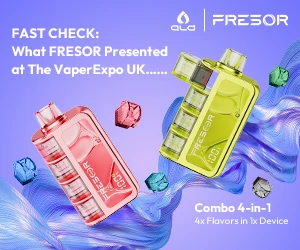
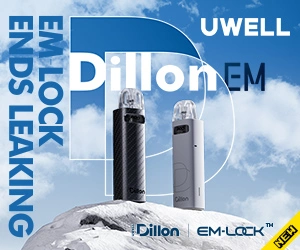

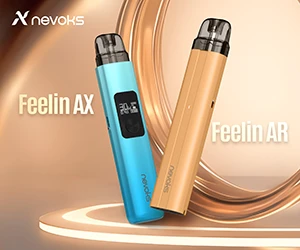
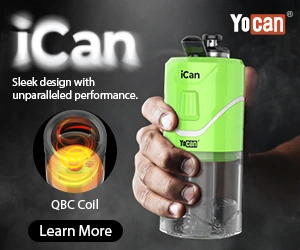
Add comment